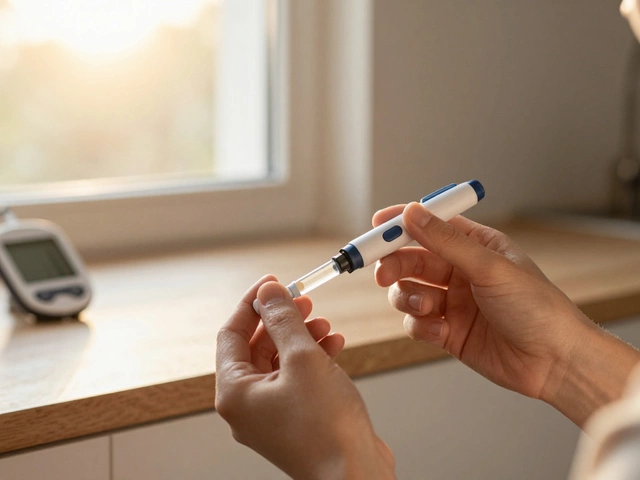Metformin Replacement: What Works When Metformin Isn’t Enough
If you’ve been on metformin for years and your doctor says it’s not cutting it anymore, you’re not alone. Many people hit a point where the pill stops controlling blood sugar or starts causing side effects. The good news? There are plenty of other medicines and habits that can step in and keep you on track.
Why You Might Need a Replacement
First, let’s figure out why metformin might not be right for you now. Some common reasons include:
- Gastro‑intestinal upset – nausea, diarrhea, or stomach cramps that won’t quit.
- Kidney concerns – metformin is cleared through the kidneys, so reduced function can raise risk.
- Insufficient glucose control – your A1C stays higher than desired despite the max dose.
- Weight gain – metformin is weight neutral for many, but a few people still add pounds.
When any of these pop up, your doctor will check your labs and discuss alternatives. It’s a chance to fine‑tune your treatment plan rather than a dead‑end.
Top Alternatives to Consider
Here are the most popular metformin replacements you’ll hear about, broken down in plain English.
1. GLP‑1 Agonists (e.g., liraglutide, semaglutide)
These injectables mimic a gut hormone that tells your body to release less insulin and feel full sooner. They often drop A1C by 1–2% and can help you lose weight. Side effects are usually mild nausea that eases after a couple of weeks.
2. SGLT2 Inhibitors (e.g., empagliflozin, dapagliflozin)
These pills make your kidneys dump extra glucose in the urine. They lower blood sugar, support modest weight loss, and have heart‑protective benefits. Watch out for occasional urinary infections and stay hydrated.
3. DPP‑4 Inhibitors (e.g., sitagliptin, linagliptin)
If you want a pill that’s easy on the stomach, DPP‑4 blockers are a solid choice. They’re not as powerful as GLP‑1s but are well‑tolerated and work well with other meds.
4. Thiazolidinediones (e.g., pioglitazone)
These improve insulin sensitivity in muscle and fat cells. They can be effective, but they may cause fluid retention or weight gain, so they’re not first‑line for everyone.
5. Lifestyle‑First Approach
Sometimes the best replacement is a change in diet and activity. A low‑carb, high‑fiber meal plan paired with 150 minutes of moderate exercise a week can lower A1C almost as much as a new drug. Combining lifestyle tweaks with a smaller dose of another medication often gives the smoothest results.
When you talk to your doctor, bring up your current concerns – whether it’s stomach upset, kidney numbers, or weight. Ask about the pros and cons of each alternative and which one fits your daily routine. Most people end up on a combo: a low‑dose metformin plus a newer drug, or a completely different class if metformin needs to be stopped.
Bottom line: a metformin replacement isn’t a scary roadblock. It’s just a new set of tools to keep your blood sugar steady and your health moving forward. Keep the conversation open with your healthcare provider, try the option that feels manageable, and monitor your numbers closely. You’ll find a plan that works for you without the old side effects.


